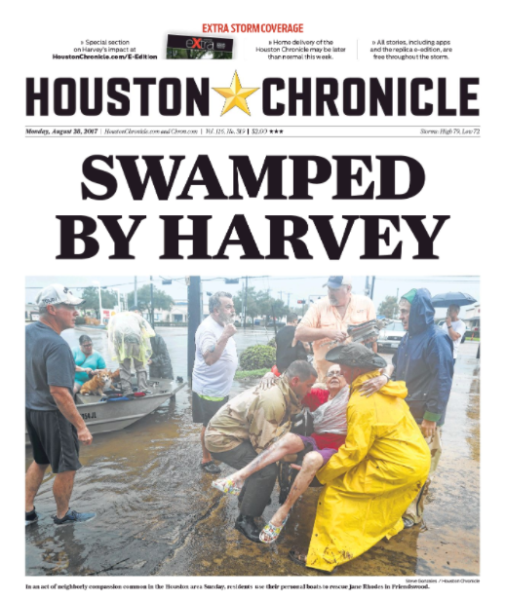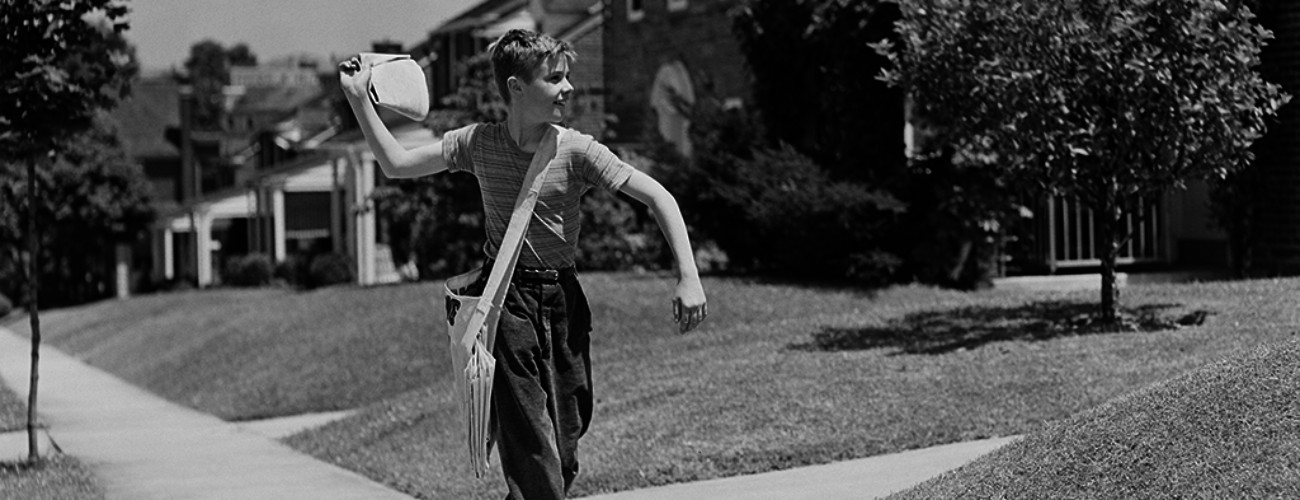Sign up for The Media Today, CJR’s daily newsletter.
Television carried footage of dramatic rescues, newspapers dropped their paywalls to keep readers informed, and social media filled with harrowing eyewitness accounts. Apocalyptic scenes from the aftermath of Hurricane Harvey dominated media coverage over the weekend and into Monday morning. Houston and its surrounding regions are being battered by torrential rain and rising waters, and the story is far from over.
As national outlets descended on the nation’s fourth-largest city, local reporters more than pulled their weight. “We have the entire editorial staff activated,” Houston Chronicle Managing Editor Vernon Loeb told CNN’s Brian Stelter. A slideshow of photography from the Chronicle team showcases their reporting throughout the region.

The staff of the local CBS affiliate, KHOU 11 News, was forced to evacuate their studio as flooding from the nearby Buffalo Bayou poured into their office, but reporter Brandi Smith and photographer Mario Sandoval remained on the air from the field. They provided one of the most dramatic scenes of the day’s coverage. After Sandoval spotted a driver trapped in the cab of his tractor-trailer, Smith flagged down passing sheriff’s deputies, alerting them to the man’s situation. She then narrated the driver’s rescue while the camera rolled. “Nothing is more valuable than your life and the lives of your family members,” Smith said at one point, her voice full of emotion. “Sometimes we get flak because, yes, we are out in it. We are doing the things we’re telling you not to do. We do it so that we can show you how bad the conditions are so you do not attempt them.”
Amazing reporting and compassion by so many journalists out there — amazing life saving by FEMA, Natl Guard, volunteers. Patriots, all.
— Jake Tapper (@jaketapper) August 27, 2017
Comparisons to Hurricane Katrina are hard to avoid, but one significant difference in this weekend’s coverage was the prevalence of social media updates and pleas from those trapped by rising waters. With reports that emergency service phone lines were overloaded, many residents took to Facebook and Twitter to share their locations and ask for help. “I have 2 children with me and tge,water [sic] is swallowing us up. Please send help…911 is not responding!!!!!!” one resident posted on Twitter. She later updated to say she had been rescued, writing, “Thank you everyone and thank you Facebook!!!!!! The miracles of social media. Forever grateful!!!”
With rains expected to continue through the week, flooding is expected to get worse. This story is only beginning. Below, more on the coverage.
- Overview of Harvey’s destruction: The Washington Post’s Kevin Sullivan, Robert Samuels, and Emily Wax-Thibodeaux have an informative look at the storm’s impact. In addition to the three authors, sixteen Post reporters contributed to the story.
- Dramatic rescue captured by CNN: Reporter Ed Lavandera and his team caught a ride with Austin Seth, a citizen who was patrolling the flooded streets. Lavandera said they were about to leave the area when they heard a woman yelling for help, and CNN showed the beginning of the rescue live.
- Hell and high water: In 2016, The Texas Tribune and ProPublica teamed up to explain why Houston was woefully unprepared for a major hurricane. CJR’s Karen K. Ho spoke with reporters on that story, who worried “Is it actually going to be as bad as what people predicted?”
- First person: The New York Times’s Clifford Krauss writes from the second floor of his Bellaire, Texas, home. “I hear that another wave of rain is on the way, and another, and another for the next couple of days,” Krauss writes. “It’s going to be a long week.”
- Independent local coverage: Poynter’s Kristen Hare speaks with a former Chronicle reporter who is delivering updates on the storm to hundreds of thousands of people.
Other notable stories
- After President Trump announced a pardon for former Arizona sheriff Joe Arpaio, The Phoenix New Times responded with a series of tweets demonstrating the incredible breadth of its coverage of the disgraced law enforcement official.
- After months of turmoil, Uber has chosen Expedia’s Dara Khosrowshahi to be its new CEO, reports The New York Times’s Mike Isaac.
- A team of LA Times reporters covered protests in Berkeley, California, where anti-fascist protesters turned violent and threatened journalists covering the event.
- For NiemanLab, Tarleton Gillespie questions whether “platform” is an outdated way to describe companies like Facebook.
Has America ever needed a media defender more than now? Help us by joining CJR today.



